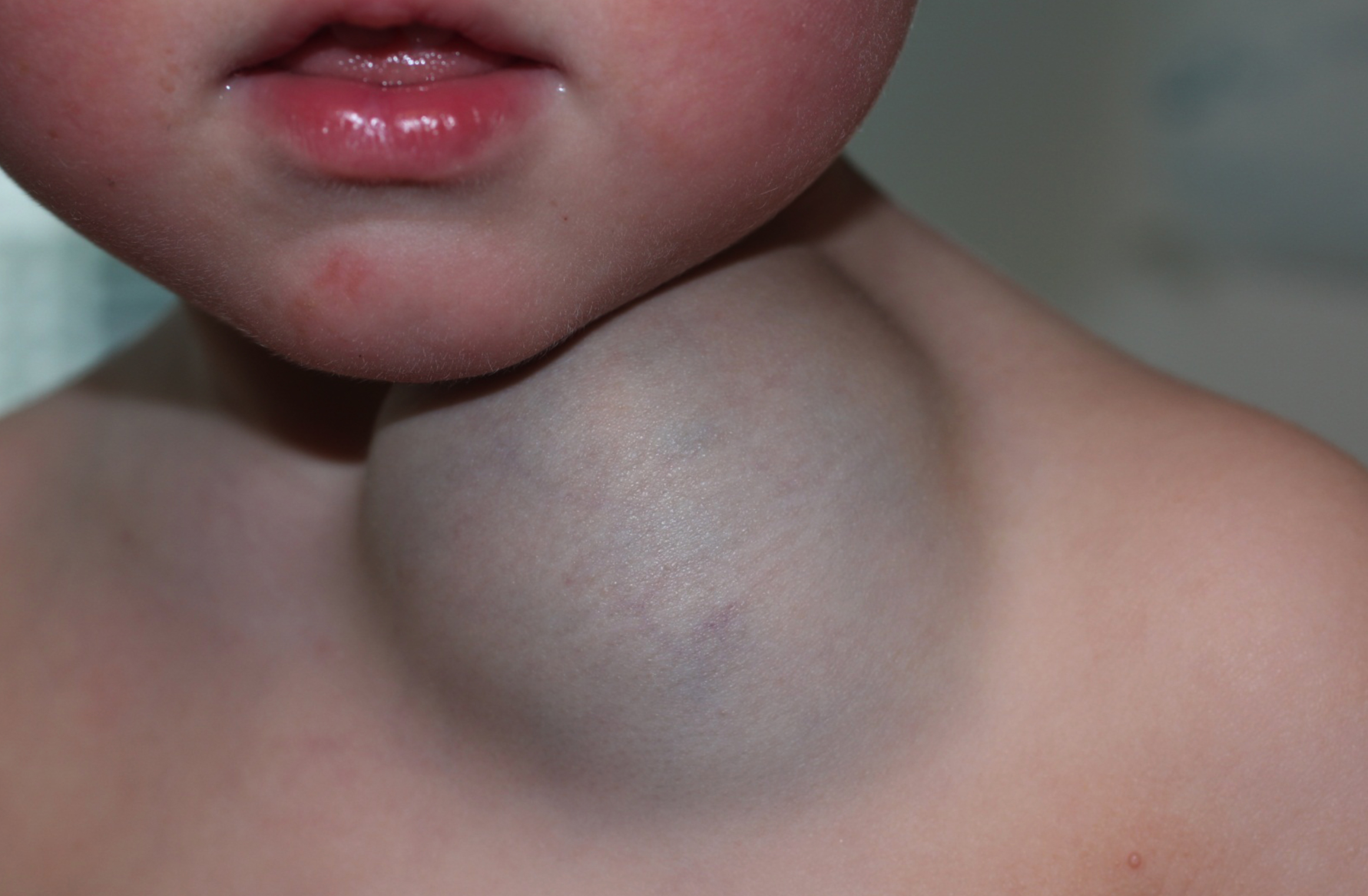

Vascular Malformation is a general term that includes congenital vascular anomalies of only veins, only lymph vessels, both veins and lymph vessels, or both Arteries and Veins: these can effect any body parts, more commonly seen effecting hands, legs, face, abdomen, brain and spine.
Only veins: Venous Malformations (VM) Only lymph vessels: Lymphatic Malformations (LM) Both veins and lymph vessels: Venolymphatic Malformations (VLM) Arteries connected directly to veins without any capillaries in between: Arteriovenous Malformations (AVM)
Why do these vascular malformations occur?
Vascular malformations are the result of developmental errors in the formation of vascular channels and are present at birth although some are not obvious for several years. They remain throughout life and slowly grow in a proportionate manner as the child grows. Some may expand as a result of trauma or infection.
Symptoms and Signs
Vascular malformations can cause disfigurement, pain, troublesome swelling, bleeding and infection. Some are associated with growth abnormalities in the affected body part.
How are these malformations treated?
Although surgery is sometimes useful, it is usually difficult for surgeons to completely remove vascular malformations, which will return if not removed completely. A nonsurgical method of closing down the blood or lymph flow into the malformation is done by interventional radiologists, who treat patients with image guided procedures. Vascular malformations are treated by embolization.
The AVMs and hemangiomas can be closed by advancing a tiny plastic tubing, no larger than a pencil point, into the feeding artery to the malformation. This can be done without incisions or stitches, and with only mild sedation. Medical glue or alcohol or small beads are then floated into the malformation until it is full and no longer has blood flowing through it. For some AVMs platinum coils are used to block flow through the feeding artery to the malformation.
The VMs and LMs are closed by injecting alcohol into the sacs filled with venous blood or lymph until these sacs collapse and no longer fill.
What is the recovery time for the procedure?
The arteriovenous malformations can be treated with a one night hospital stay. There is usually minimal discomfort for one to three days.
The venous and lymphatic malformations require multiple treatment sessions depending on the size and vascularity. These malformations swell after treatment with alcohol, and the swelling and pain may last for 3-5 days. During this time, we give patients medication for any pain or swelling they may have. The full shrinkage of these malformations may take four to six weeks.
How new is this technique?
Embolization techniques have been used extensively all over the world for the past 30 years. They have been well established for many years, and have proved invaluable in treating vascular malformations either solely or as preoperative procedure in case of large ones for cosmetic purpose.
What is the best age to have treatment?
We can treat any age from newborn to adult. The best age of treatment depends on the specific vascular malformation and its symptoms, and is best individualized to each person.
——————————————–
Dr.Sridhar Reddy Baddam
M.D, FVIR, FPIR (pediatric interventions) (USA)
Vascular & Onco Interventional Radiologist,
Apollo Health City, Hyderabad
To book appointments with the finest Pediatricians and Child care specialists, visit the link below:
Pediatric-surgeon
Pediatric Surgeon in Bengaluru
Pediatrician in Mumbai